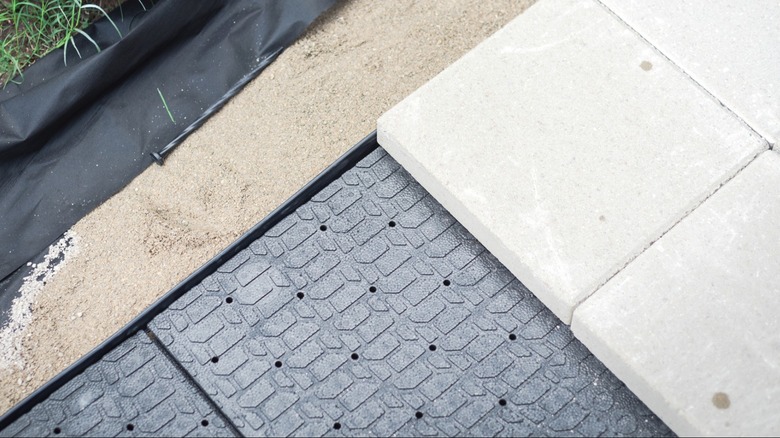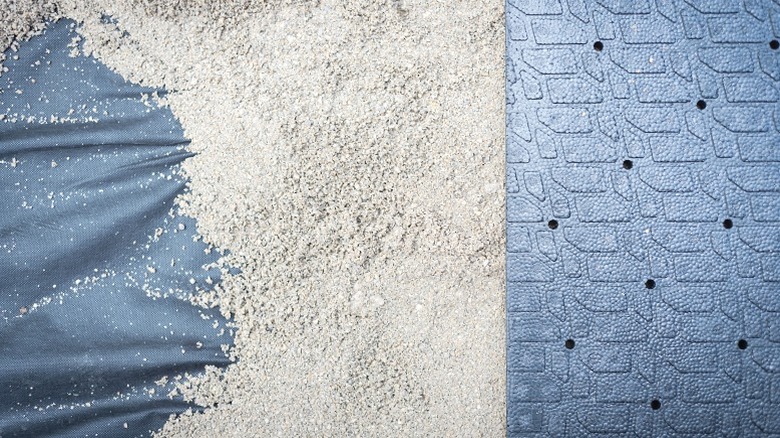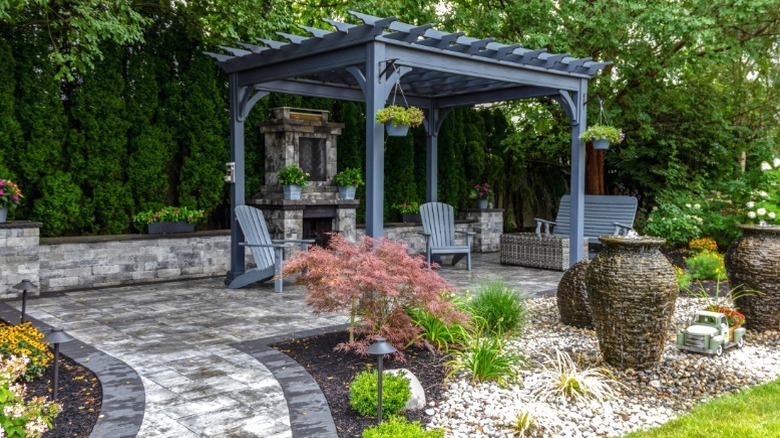Simplify Your Paver Installation With Brock Panels
We may receive a commission on purchases made from links.
It's a great time to be a DIYer, thanks to all the nifty innovations allowing novices to do more projects with greater confidence and fewer errors. Even with advanced projects around the home that need careful site prep and installation, you can cut down the time, expense, and confusion involved by choosing the right tools. And in the case of patio paver base pads, revolutionary solutions come in surprisingly simple packages. Now, you can build patios, pool decks, walkways, and other DIY paver projects without labor-intensive fill layers. Products like Brock PaverBase panels are easy to install, avoiding the need for extensive digging or pouring gravel. Brock PaverBase Panels cost $10.77 at Home Depot, and with each piece covering 5 square feet, you can get enough to cover a patio for only a few hundred dollars! For smaller projects, you'll save time and lots of money by opting for these user-friendly pads.
Performance-wise, Brock PaverBase panels supply all the support and drainage needed for a lasting, stable surface. Perforations and drainage channels direct water away from the patio. According to Brock PaverBase, the panels also provide insulation equivalent to 9 inches of stone base. Frost heave will be less of an issue with the thermal regulation, preventing ground swelling that can shift the pavers. The durable polypropylene construction is also resistant to decay, mold, and cracking. You can even use them to support heavier patio equipment like a hot tub, making them a top choice for all kinds of situations.
Speed up paver projects with an easier installation process
Brock PaverBase panels let you bypass significant steps in the standard paver project. Usually, you would need to dig and level the ground, lay a 6-inch gravel layer over fabric, and layer 1 inch of sand before putting in your pavers. Meanwhile, a Brock PaverBase system eliminates the need for gravel, with each panel replacing up to 200 pounds of base fill. You'll save money on material, and more importantly, you'll only have to dig about 3 inches rather than the 6 to 8 inches needed for a traditional setup. That will save you a ton of time and prevent hang-ups on rocks, hard earth, or underground lines buried deeper in the ground.
To lay a paver surface using Brock panels, you'll outline the area and dig 3 inches into the ground. After grading the ground for a drainage slope, smoothing it out, and compacting the soil with a tamper, you can lay landscaping fabric to hold the sand layer. Put two ½-inch pipes over the fabric and pour leveling sand over to cover it. The pipes will give you a guide to screed the sand smooth with a long, straight board. After you smooth and tamp the sand, the Brock PaverBase will go down before the pavers. The panels interlock via tongue-and-groove and are easily cut to size and shape with a utility knife. You can then lay your pavers and fill the joints with polymeric sand, and the surface will be as stable as any patio installation.
Are Brock panels the best choice for every paver installation?
Brock panels make paver projects a breeze for DIYers and professionals alike, with many finding the lightweight pieces last for years without issue. No more back-breaking work from deep digging or hauling, dumping, and leveling tons of gravel. However, simplicity and general reliability aren't the only considerations when choosing between paver panels and a gravel base. Depending on costs in your area, the price alone may be enough to make the traditional method more cost-effective. Gravel or crushed stone fill also provides rapid drainage, making it a good choice for spots that see heavy rainfall. For a tried-and-true method that's stood the test of time in virtually every application, gravel or crushed stone are the ones to pick.
Context is also essential. Brock panels can work in several places around the property. But they aren't designed to withstand excessive pressure, meaning driveways and other areas with vehicles are out of the question. Instead, you can opt for heavy-duty panels, such as Ultra Base, that have higher load capacities for vehicles. The issue here, though, is the price, as these can run about two to three times the cost of Brock panels. Generally, if you have a smaller patio or walking area the average DIYer might try, Brock panels are a great choice. You'll save money on aggregate and loads of time by cutting the digging requirements in half. It's low-risk, high-reward, and worth anyone's consideration when they want a reliable paver installation with minimal effort.


